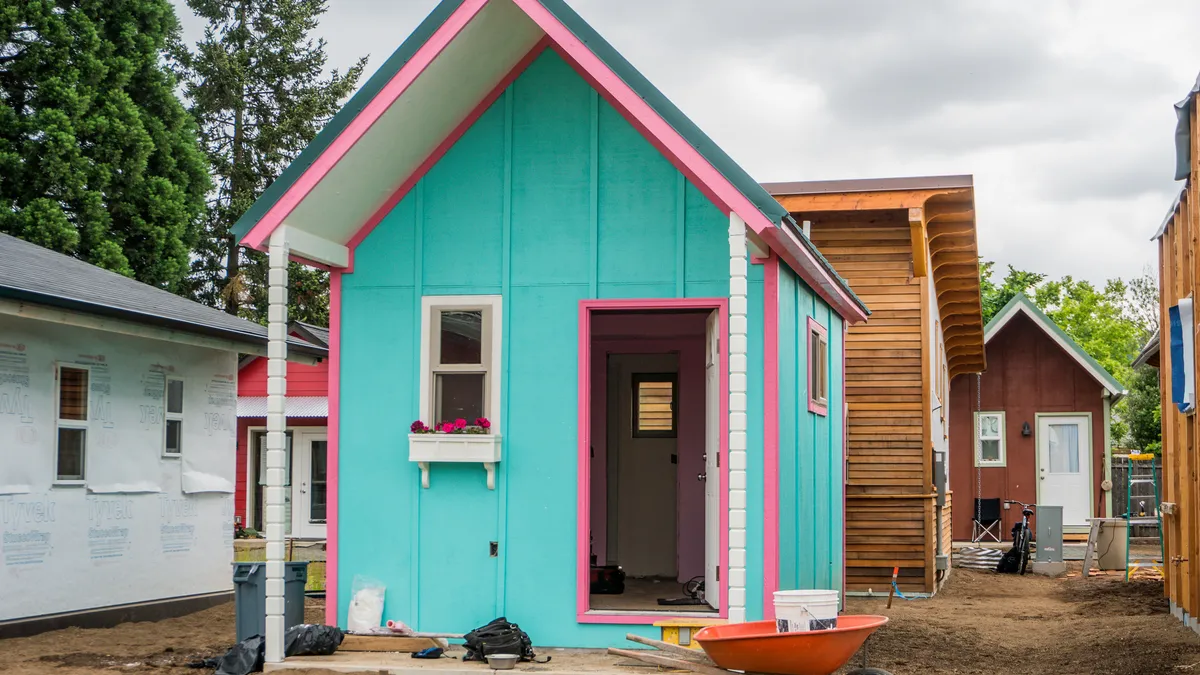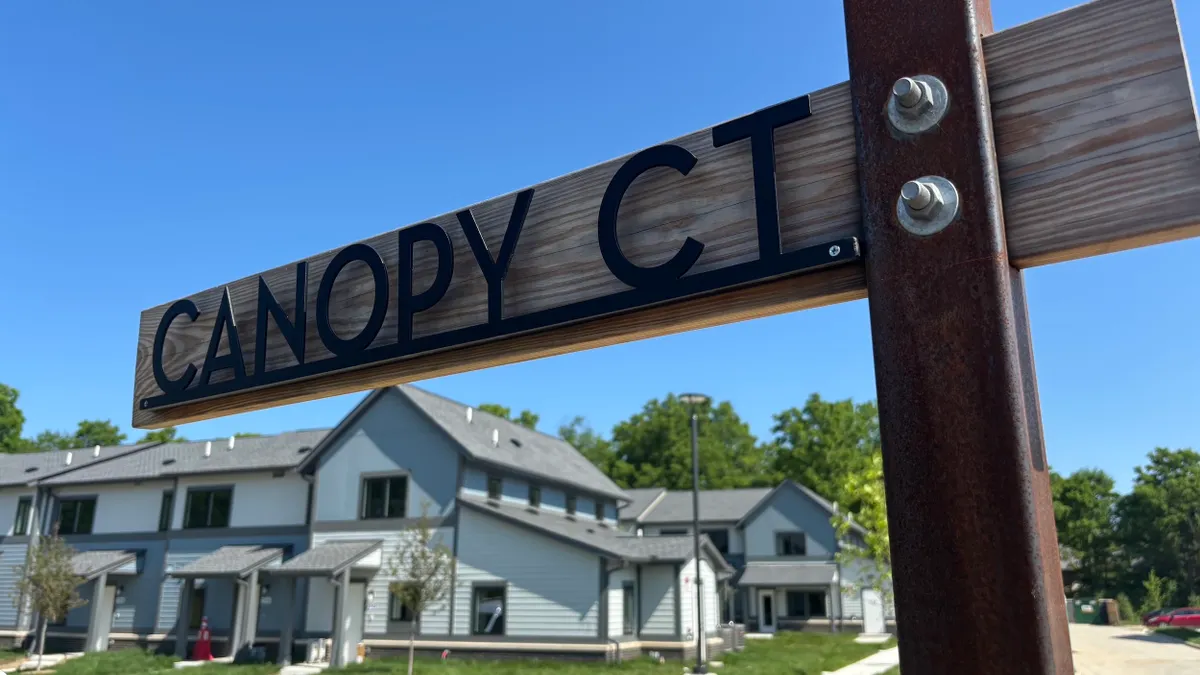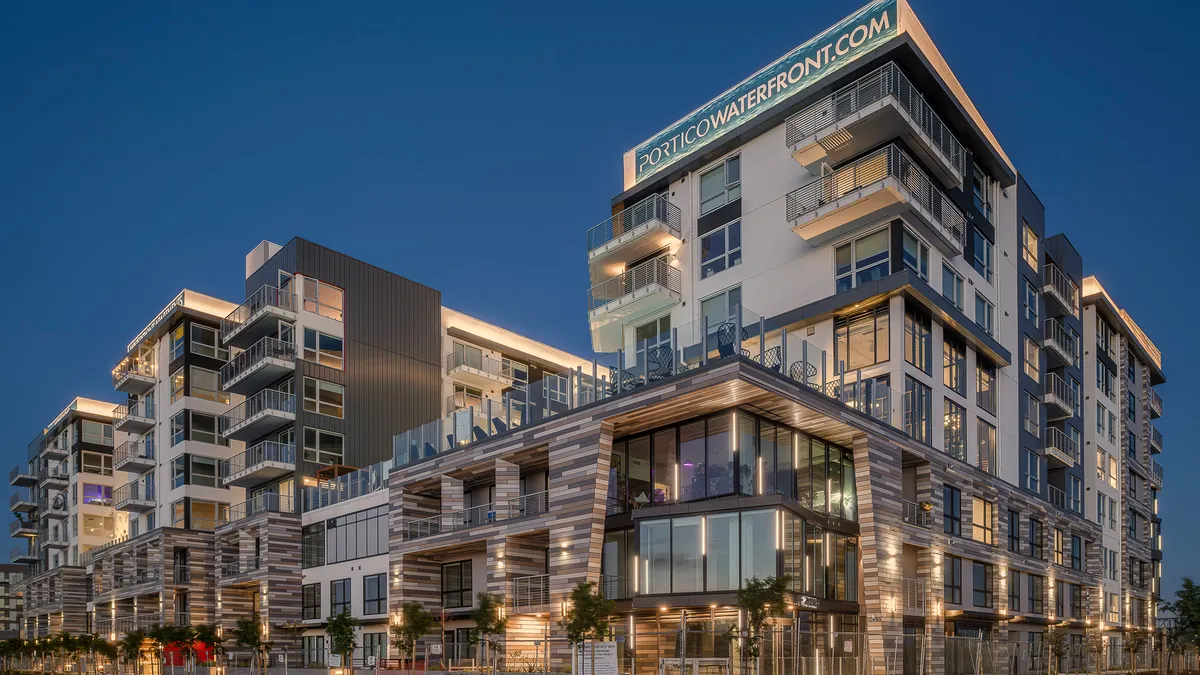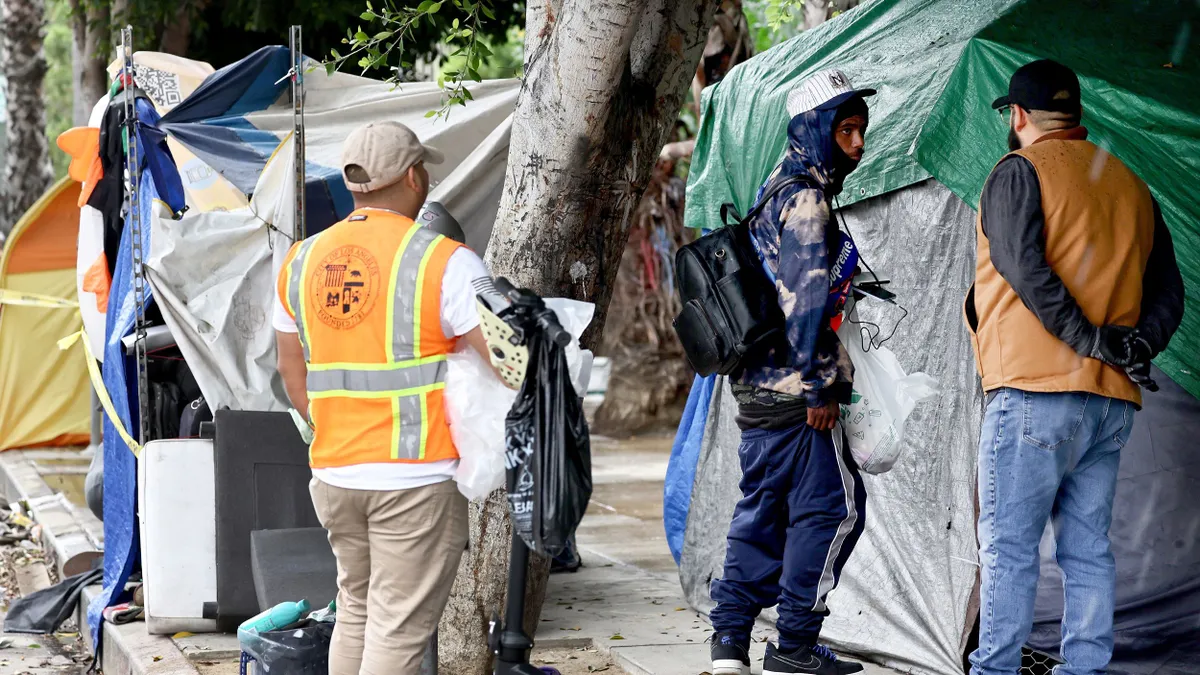In 2014, Andrew Lunetta, was feeling optimistic coming out of a Syracuse City Council meeting. His pitch to build tiny homes on the city’s vacant lots to house people experiencing homelessness received enthusiastic support, and Lunetta was excited to get started. Then the community pushback and NIMBYism began, he said. Before long, the city pulled its promise of funding, and Lunetta worried his dream would go down in flames.
Nine years later, the picture has changed. Lunetta, now founder and executive director of Syracuse nonprofit A Tiny Home for Good, and his team have overseen construction of 31 homes across the city. His goal is to add another 24 to the tally by the end of 2024. Reaching this point took some rethinking and hard work to get city and community buy-in, he said. “Today we have a great partnership with the city,” he said. “They’re very generous in their support.”
Communities nationwide are experimenting with tiny homes to house populations who struggle with stable housing. As in Syracuse, the idea is often met with community resistance, but for cities that can overcome opposition, some efforts to date seem promising.
A Syracuse University Maxwell School survey found that A Tiny Home for Good saves Onondaga County $117,694 per tenant per year, for example, from decreased use of social and emergency services, food programs, overnight shelters and jails. The other, less measurable benefit the survey highlights is the redevelopment of vacant lots and derelict homes throughout Syracuse, improving aesthetics and reducing crime.
For all the good some tiny homes and tiny home communities can provide, they’re not the silver bullet that will solve the homelessness problem. Data captured in the Bay Area found that, when framed as a transitional step, nearly three-quarters of residents failed to move on to permanent housing. Funding is another barrier, and one that often prevents developers of tiny homes for the homeless from providing critical services like transportation, social services, and even basics like showers or toilets. Despite the negative factors, however, tiny home providers see them as better solutions than shelters.
Varying approaches
Not every plan to leverage tiny homes as a solution to unstable housing looks the same.
While Bryan Meyer, CEO and co-founder of the Veterans Community Project in Kansas City, Missouri, shares many of Lunetta’s goals, his organization — as its name suggests — focuses on veterans who are homeless. A former Marine turned attorney, Meyer began working with fellow vets by donating his legal services. “Through that work, I became more aware of the issues facing homeless vets and how our systems weren’t sufficient in addressing them,” he said. “I wanted to find a way to help, including [by providing] housing and reintegration into the community.”
In 2016, with a team of fellow veterans, Meyer approached the Kansas City mayor and City Council to pitch his tiny home village idea. “We sold the idea that we can solve these issues at a municipal level,” Meyer said. “The mayor was a former Marine and was supportive.”
That first community sits on 4.2 acres, which the city sold to VCP for $500, according to Meyer. On that site, the organization built 49 tiny homes of 249 square feet each. In the heart of the village is a 5,000-square-foot community center where residents can access support services like dental and medical care, fiscal education, job training and, most important, case managers. The entire project is designed to be a stepping stone for veterans to eventually access permanent housing.
VCP has expanded to five additional cities with plans to launch operations in a sixth. To date, said Meyer, VCP has about an 85% success rate for transitioning veterans to long-term, stable housing environments. “The average stay in our homes is around 14 to 15 months,” Meyer said. “Once our tenants have moved on, we have people dedicated to aftercare follow-up and keeping the lines of communication open. If something happens and someone needs to return, we want them to come back to us.”
To become a resident, veterans need only prove their prior military service and that they are in need of safe, stable housing. They do not pay rent — Meyer considers their time with case managers their payment.
While VCP concentrates several dozen tiny homes in a village setting, “A Tiny Home for Good” disperses slightly larger tiny homes, across Syracuse. In both organizations, the homes have kitchens and bathrooms. Residents’ rent is based on their individual circumstances. The organization provides ongoing support by staff and partners with other organizations on care management to encourage long-term, safe and permanent housing. “We use a coordinated entry list and try to pick tenants as high up as we can,” Lunetta said. That means those people with more urgent needs for housing get priority.
By building in a dispersed fashion, Lunetta says tenants are more likely to avoid issues that might be compounded in a communal approach. “I worked in homeless shelters and saw the same people bouncing back from poorly managed apartments with people in similar circumstances,” he said. “It’s also easier to sell the idea of a few scattered tiny homes than many in one neighborhood.”
Funding, coding and zoning
Both Lunetta and Meyer will tell you that, of all their challenges, keeping the donations and fundraising going is the biggest. Lunetta partnered with the Greater Syracuse Land Bank, which offers land to his organization at deeply discounted rates. With several villages around the country, Meyer uses different models of funding in each community. “We’ve learned that a private-public partnership is essential — you need government and community buy-in,” he said.
The right zoning and coding are essential as well. The Colorado state legislature last year passed House Bill 1242, which set building standards for homes of 400 square feet or less. The law addresses requirements for utilities, adherence to zoning, floodplain and other land-use codes.
Sponsored by Rep. Cathy Kipp, the bill was designed to improve the safety of certain affordable housing options. “When people used tiny homes on temporary foundations, they couldn’t do it safely because they were regulated like RVs,” she said. “We want to ensure these affordable home options are also safe and subject to inspections.”
The legislation is already having its intended effect, clearing the path for VCP’s next community in the Colorado town of Longmont. As he watches his idea grow, Meyer reflects on the group’s future: “Ten years from now, we will have served thousands of vets.”


















